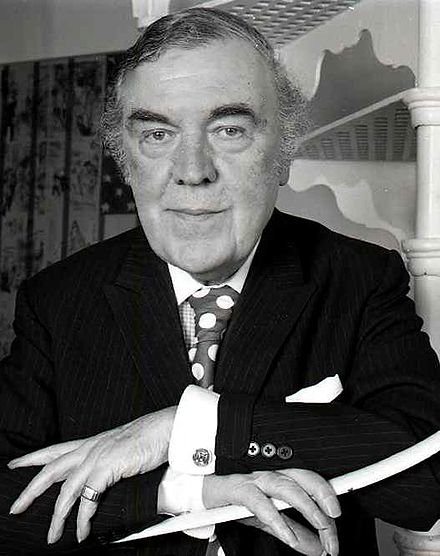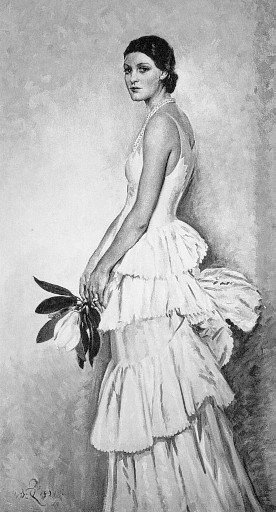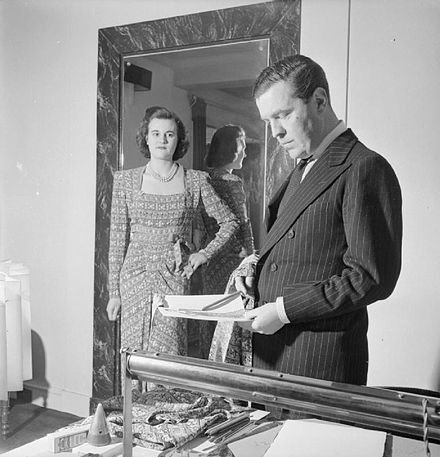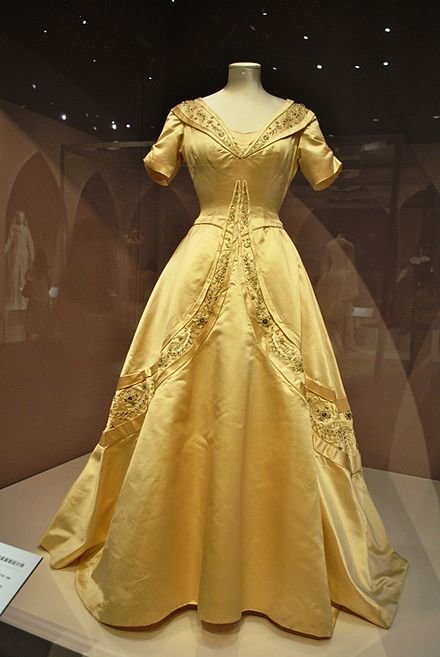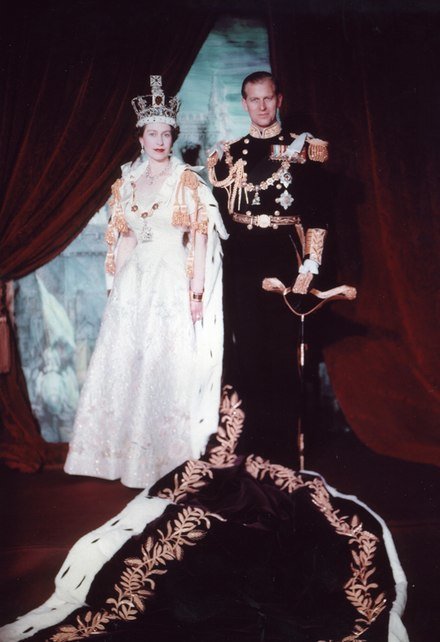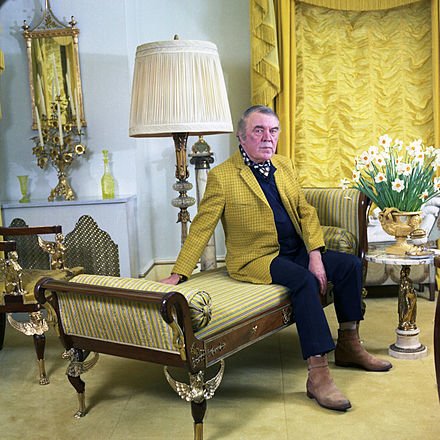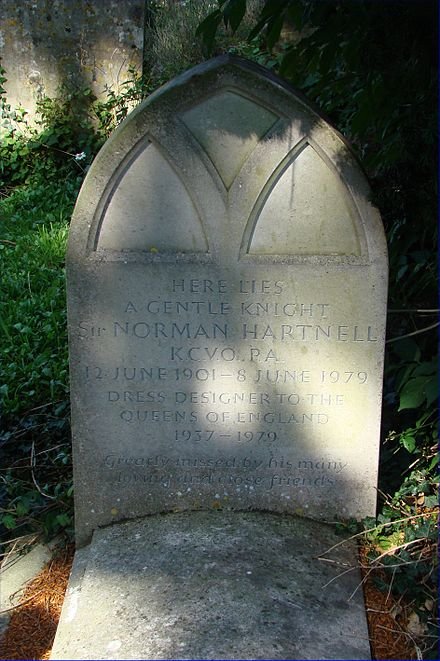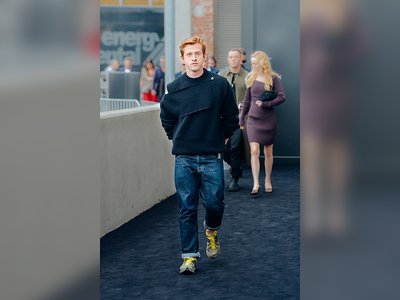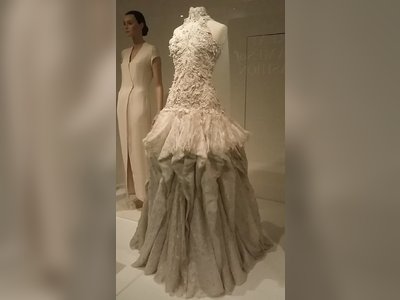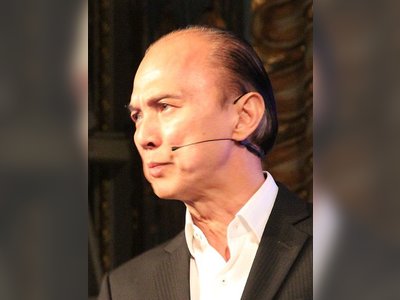British Heritage
Remember, Cherish, Learn.
beta
Norman Hartnell - Dressmaker to the Queen
Contribution of Norman Hartnell to British Heritage.
Sir Norman Hartnell, a leading British fashion designer, left an indelible mark on British heritage through his exquisite designs and significant contributions to the world of fashion. His work, especially for the ladies of the royal family, earned him esteemed recognition and played a role in shaping British fashion on the international stage. Let us delve into the legacy, contributions, success, and general information about this remarkable figure.
Born on June 12, 1901, in Streatham, southwest London, Norman Hartnell was introduced to the world of fashion through his passion for performing in and designing for Cambridge University productions. His love for design grew, and he opened his own business in 1923 at Bruton Street, Mayfair, with financial support from his father and sister.
Hartnell's designs appealed to debutantes and their mothers, becoming an alternative to Parisian and older London dress houses. His distinct blend of the spirit of the Bright Young Things and Flappers with romantic and fluid details garnered attention from both press and clients. Notably, he gained popularity with the younger stars of the stage and screen, solidifying his position as a sought-after designer.
Hartnell's career took a momentous turn when he received his first commission from the British Royal Family in 1935. He designed the wedding dress and bridesmaids' dresses for Lady Alice Montagu Douglas Scott's marriage to Prince Henry, Duke of Gloucester, earning the approval of King George V and Queen Mary. The Duchess of York, later Queen Elizabeth The Queen Mother, also became a client.
His success continued, and he became the Dressmaker to Queen Elizabeth The Queen Mother in 1940, and later, Dressmaker to Queen Elizabeth II in 1957. The British Royal Family's patronage further enhanced his reputation, making him a leading fashion designer not only in Britain but also on the international stage.
Hartnell's designs were celebrated for their originality and intricacy. He was known for employing lavish embroidery as an integral part of his most expensive clothes, making them unique and difficult to replicate as ready-to-wear pieces. His in-house embroidery workroom was the largest in London couture, a testament to his dedication to craftsmanship and attention to detail.
Moreover, Hartnell demonstrated his mastery in utilizing British woollen fabrics creatively, thanks to his background in the fashion industry and keen interest in modern trends. His ability to adapt current fashion to the personal royal style of Queen Elizabeth II highlighted his skill in tailoring and dressing the British monarchy.
During World War II, Hartnell, like other couture designers, faced government trading and rationing restrictions. However, he joined the Home Guard and continued his career by sponsoring collections for overseas buyers, competing with designers from Occupied France and Germany. He also designed women's uniforms for the British army and medical corps during the war, contributing his expertise to support the wartime effort.
Hartnell's most iconic contributions were his designs for the British Royal Family's Coronations and weddings. Notably, he designed the Coronation dress for Queen Elizabeth II in 1953, a masterpiece featuring a sweetheart neckline and a full silk skirt adorned with embroideries depicting the national botanical emblems of the United Kingdom and Commonwealth countries.
He also gained recognition for designing the wedding dresses of Princess Elizabeth (later Queen Elizabeth II) in 1947 and Princess Margaret in 1960. These moments marked important milestones in his career and further solidified his position as a leading designer in British heritage.
Norman Hartnell's legacy lies in his contribution to British fashion, especially his exquisite designs for the British Royal Family. He was instrumental in establishing London as an innovative fashion center, rivaling Paris, and gained international acclaim for his artistry, creativity, and attention to detail.
Despite facing challenges in the changing fashion landscape of the 1960s, Hartnell remained a celebrated designer until his death on June 8, 1979. His work continues to be celebrated and remembered, with occasional revivals of his brand. Norman Hartnell's influence on British heritage endures as a testament to his unparalleled skill and contribution to the world of fashion.
Early Life and Career
Born on June 12, 1901, in Streatham, southwest London, Norman Hartnell was introduced to the world of fashion through his passion for performing in and designing for Cambridge University productions. His love for design grew, and he opened his own business in 1923 at Bruton Street, Mayfair, with financial support from his father and sister.
Hartnell's designs appealed to debutantes and their mothers, becoming an alternative to Parisian and older London dress houses. His distinct blend of the spirit of the Bright Young Things and Flappers with romantic and fluid details garnered attention from both press and clients. Notably, he gained popularity with the younger stars of the stage and screen, solidifying his position as a sought-after designer.
Royal Connection and International Success
Hartnell's career took a momentous turn when he received his first commission from the British Royal Family in 1935. He designed the wedding dress and bridesmaids' dresses for Lady Alice Montagu Douglas Scott's marriage to Prince Henry, Duke of Gloucester, earning the approval of King George V and Queen Mary. The Duchess of York, later Queen Elizabeth The Queen Mother, also became a client.
His success continued, and he became the Dressmaker to Queen Elizabeth The Queen Mother in 1940, and later, Dressmaker to Queen Elizabeth II in 1957. The British Royal Family's patronage further enhanced his reputation, making him a leading fashion designer not only in Britain but also on the international stage.
Innovations in Design
Hartnell's designs were celebrated for their originality and intricacy. He was known for employing lavish embroidery as an integral part of his most expensive clothes, making them unique and difficult to replicate as ready-to-wear pieces. His in-house embroidery workroom was the largest in London couture, a testament to his dedication to craftsmanship and attention to detail.
Moreover, Hartnell demonstrated his mastery in utilizing British woollen fabrics creatively, thanks to his background in the fashion industry and keen interest in modern trends. His ability to adapt current fashion to the personal royal style of Queen Elizabeth II highlighted his skill in tailoring and dressing the British monarchy.
Contribution to Fashion during World War II
During World War II, Hartnell, like other couture designers, faced government trading and rationing restrictions. However, he joined the Home Guard and continued his career by sponsoring collections for overseas buyers, competing with designers from Occupied France and Germany. He also designed women's uniforms for the British army and medical corps during the war, contributing his expertise to support the wartime effort.
Coronation Dresses and Wedding Gowns
Hartnell's most iconic contributions were his designs for the British Royal Family's Coronations and weddings. Notably, he designed the Coronation dress for Queen Elizabeth II in 1953, a masterpiece featuring a sweetheart neckline and a full silk skirt adorned with embroideries depicting the national botanical emblems of the United Kingdom and Commonwealth countries.
He also gained recognition for designing the wedding dresses of Princess Elizabeth (later Queen Elizabeth II) in 1947 and Princess Margaret in 1960. These moments marked important milestones in his career and further solidified his position as a leading designer in British heritage.
Legacy and Enduring Impact
Norman Hartnell's legacy lies in his contribution to British fashion, especially his exquisite designs for the British Royal Family. He was instrumental in establishing London as an innovative fashion center, rivaling Paris, and gained international acclaim for his artistry, creativity, and attention to detail.
Despite facing challenges in the changing fashion landscape of the 1960s, Hartnell remained a celebrated designer until his death on June 8, 1979. His work continues to be celebrated and remembered, with occasional revivals of his brand. Norman Hartnell's influence on British heritage endures as a testament to his unparalleled skill and contribution to the world of fashion.
- Norman Hartnellen.wikipedia.org
